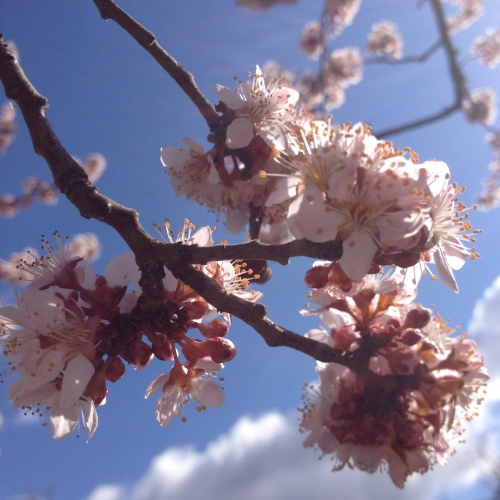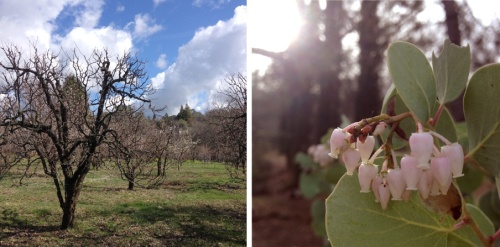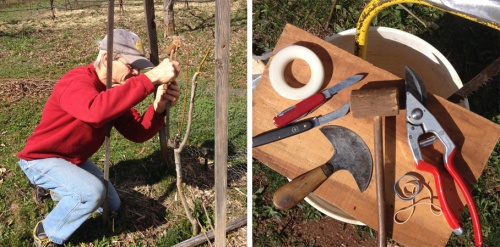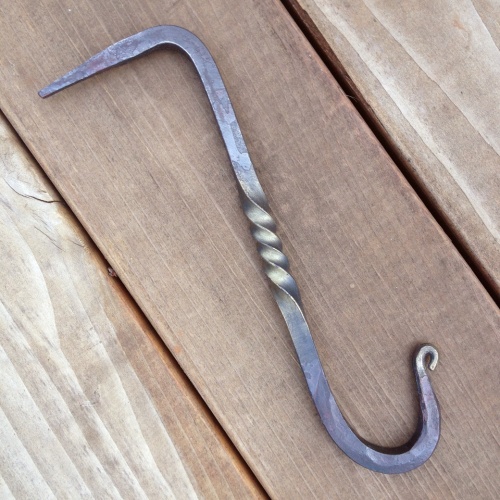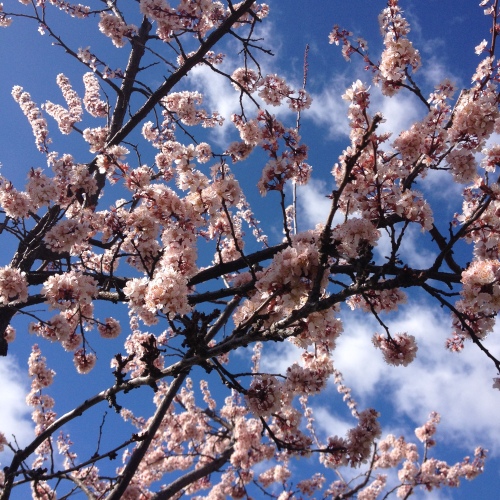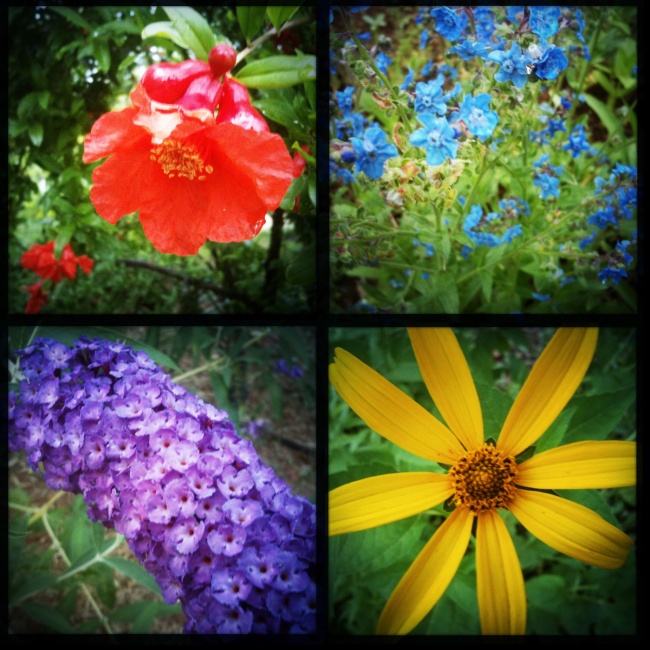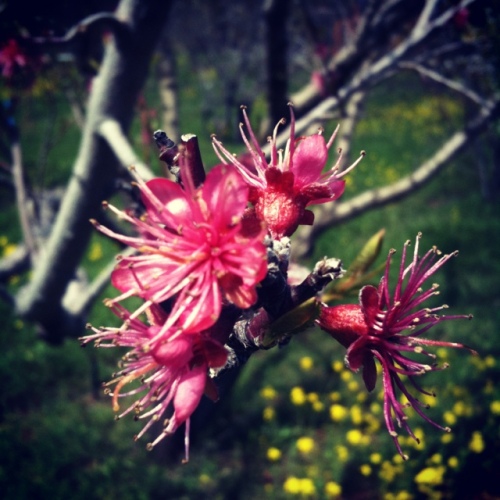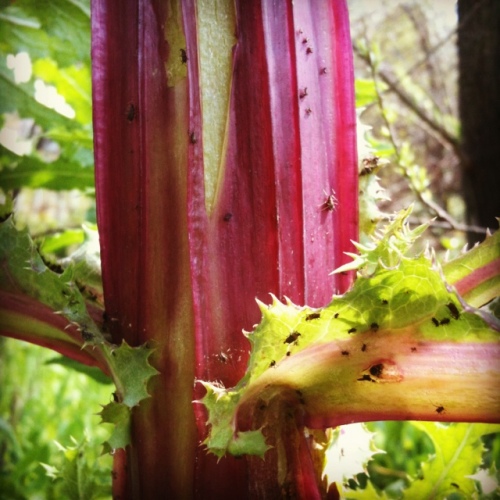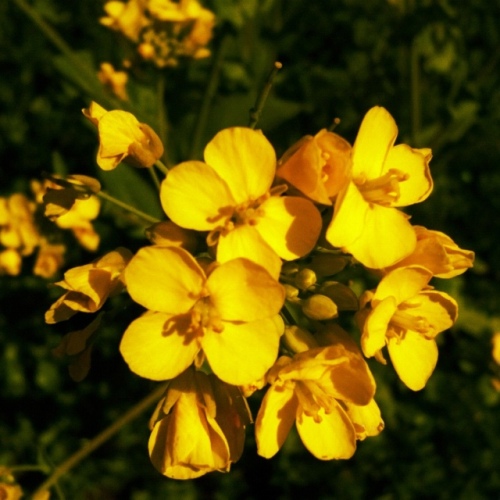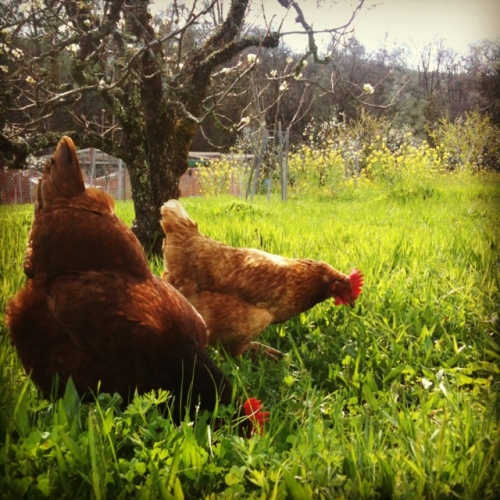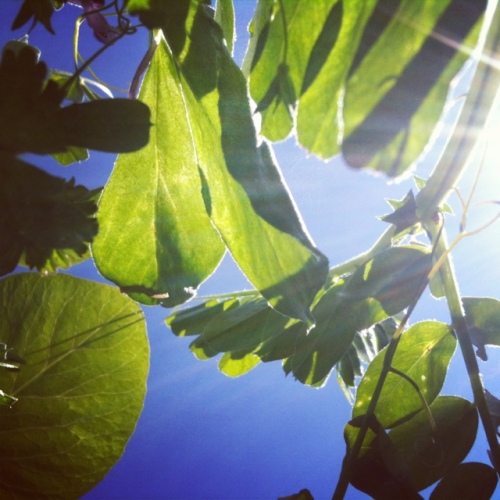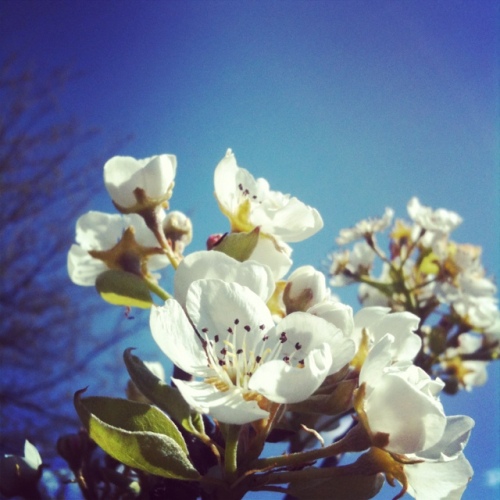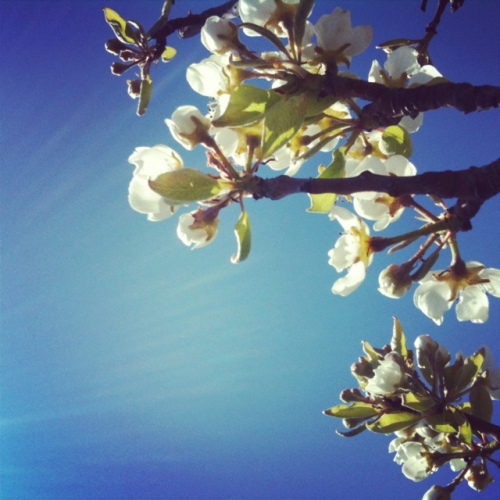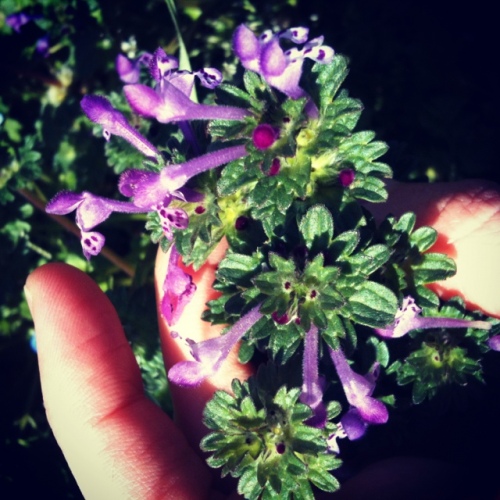It’s been a curious and disconcerting winter here in the foothills of Northern California — little rain, barely a dusting of snow, and only maybe two proper capital-s Storms all season. We’re looking at a record drought year. Farmers are scaling back their crops, people are getting nervous about their ponds and wells, and even city-dwellers are getting ready for cutbacks in their household water. Last year, our orchard was an expanse of golden-blooming mustard; this year, the grass is still dry and brown.
But no matter how strangely skewed the seasons may be, there are still signs of Spring popping up all over, great and small… like the spectacular cotton-white clouds and delicate manzanita blossoms of a February afternoon:
Jars of beet-infused sauerkraut fermenting away, and garlic sprouts emerging through their warm blanket of straw mulch:

And it’s time for grafting. Here, Tom carefully splices a twig of an heirloom El Dorado pear onto a young tree. The scion wood came from Pat and Pete Enochs (of Lattitudes fame), from one of their favourite trees. If we’re lucky, the graft will take, and we’ll have a crop of our own in a few years. At right, some of our trusty grafting tools are at the ready on a makeshift table; the half-moon blade and tiny wooden mallet belonged to Papu, my grandfather, and have those worn edges and softly polished handles that only come from many decades of use and good care.
And speaking of nearly-forgotten skills… I’m thrilled to be taking a blacksmithing class! This is one of the things I’ve wished for years that I’d learned from Papu — he could make anything from wood, metal, or spare sundry parts, but I was always especially fascinated by the wrought-iron scrollwork that decorated my grandparents’ kitchen. I’ve just barely begun to scratch the surface of the skill, but already I can see why he was so good at it — for every bit of strength and speed, it takes an equal measure of careful thought, precision, intuition.
Our first project was a drive hook, which looks simple at a glance but combines a wealth of basic techniques — tapering square and rounded points, shaping angles and curves, even some decorative elements like a bar twist and scrolled finial. (The right-angled point acts like a nail, and is driven into a post or beam.) I haven’t decided yet whether to hang it in the barn, the wine cellar, or the chicken coop!
And, speaking of grandparents — yesterday was my Grandma Mary’s 91st birthday! My aunt and cousins came to visit from Boston, and we all had a lovely birthday dinner together, swapping bits of Harper family history and listening as Grandma told stories about growing up in the little town of Fort Morgan, Colorado. At 91, she’s still writing newspaper articles, chronicling the goings-on of family, relatives, and friends, and keeping very busy indeed — as she says, she has “all her buttons!” (She also encouraged me to start writing this blog in the first place, to tell the story of our little farm and share it with readers near and far… and of course it was Grandma Mary who taught me to knit, sew, and invest in stocks. She’s quite a lady!)
And onward, Spring! Now if we could just have a little more rain, please… but in the mean time, I’m certainly enjoying the contrast of pink plum petals against blue-and-white sky. Yes, we’ll worry about the drought and make plans for the long dry summer ahead, but sometimes, for a few minutes, a tree full of blossoms and blissful buzzing bees is simply everything you need.

